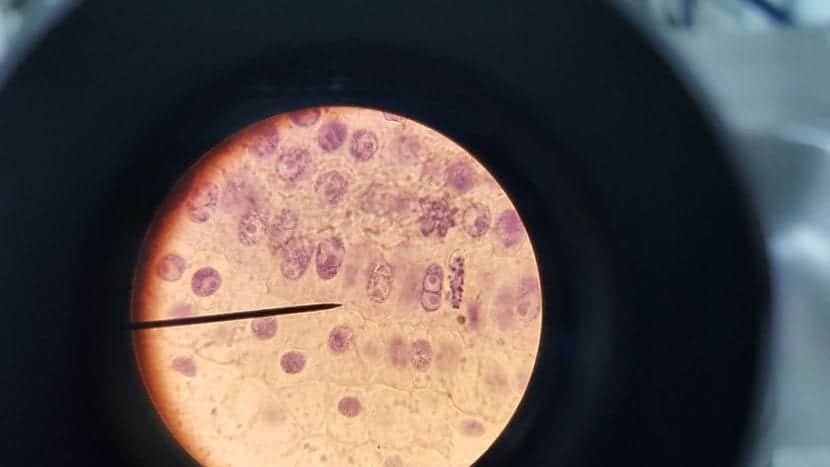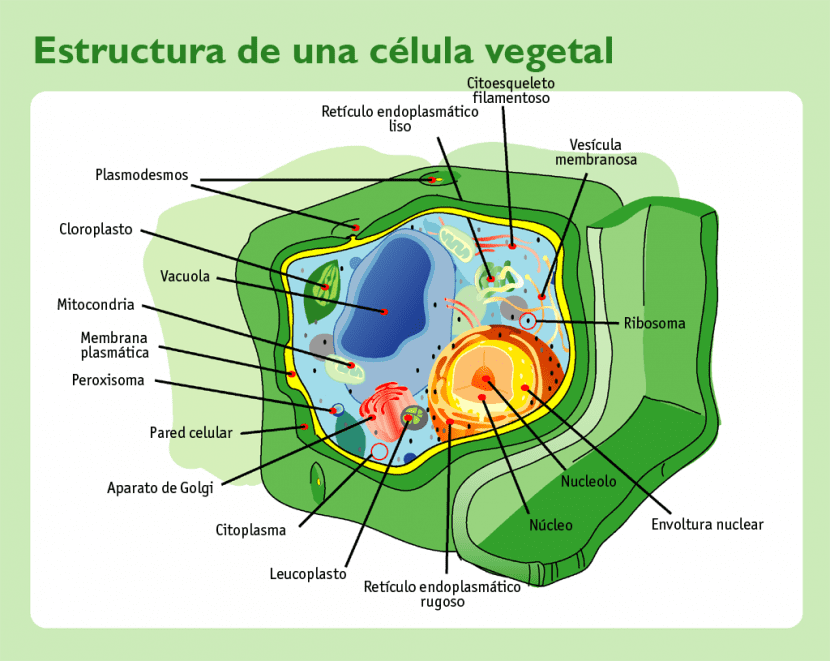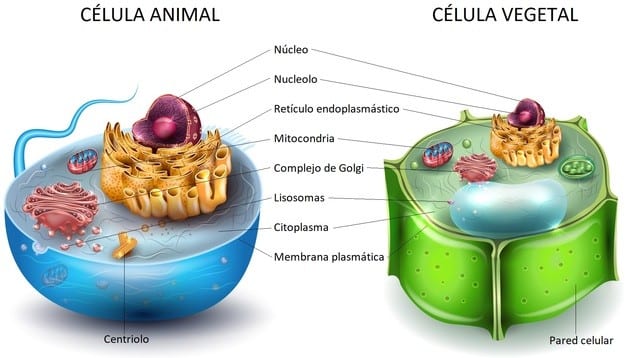
Mitosis in plant cells seen through the microscope.
Image - Wikimedia / Vic-gompi
It is not strange that we think that plants are beings that, apparently, do not move and that they are always more or less the same. That they react to the changes of season, but ... little else. However, the reality is that if we take a simple magnifying glass, or put the sheets against the light, we will realize that without the plant cell none of them would have life, nor would they be what they are.
In the bark, in the limb of its foliage, in the petals of the flower,… in all the parts of the plants there are cells. It is one of those things that they have in common with animals, which are also "made up" of millions of these tiny living beings; Of course, ours are a bit different because we, for example, do not need to photosynthesize. Do you want to know what parts and what functions it has?
What is it?

I remember when I was a child the first time I really looked at a leaf. I do not mean to pass by its side and take a quick look, but rather to approach the plant, caress it, touch the blade of the leaf, observe the shape it has, its color, and its smell (which in that case I did not have, as is usual as I discovered over time). But I still wanted to go further, and I observed her through a magnifying glass.
I was amazed to see what was inside her. Those rectangular shapes are the cells, the ones that give it life. But what exactly are they? Well then, They are eukaryotic cells, that is, they have a cytoplasm with a well-organized nucleus.
Classification of plant cells
Plant cells are classified in several ways in order to better study and understand them:
Types according to their characteristics
- Parenchyma cells, or in other words, cells that have a specific function. For example, transfer cells are responsible for the transport of nutrients and, in addition, contribute to photosynthesis. These cells have thin and permeable primary walls, which allow them to transport molecules between them.
- Collenchyma cells, or bra. They are the ones that provide flexibility, both to the stems and to the petioles and nerves of the leaves. They are present only in young and herbaceous plants.
- Sclerenchyma cells or hard cells. They serve as mechanical support. This group includes the sclereids that have a very thick cell wall, and are those that make highly lignified tissues rigid.
Cell tissue types
- Xylem: they are cells that have an elongated shape, specialized in conducting water.
- Phloem: There are two types, the sieve tube, which is basically the conductive tube for organic and inorganic nutrients produced by the photosynthetic zone of leaves, and the cells that are associated with it.
- Of the epidermis: They are specialized cells that cover the surface of all parts of the plant, but those of the roots are a little different, since they are not protected by any surface layer.
What are the parts of the plant cell? And its functions?

Now that we have seen what plant cells are, it's time ... to go a little deeper, of course. It is time to know what its parts are, and what functions each one of them fulfills:
Cellular wall
It is a developed wall with cellulose microsporophylls arranged in an orderly manner. While it does not allow cell growth, it does can increase your deposit of those cellulose microfibrils.
Nuclear membrane
It is a very thin layer of lipids that separates the nucleus from the cytoplasm. It has tiny holes through which both the access and the exit of the material of the cell nucleus is allowed.
Plasma membrane
It is an outer layer that envelops the whole cell. It is composed mainly of lipids and proteins. On its surface it has tiny pores that are important for it to be able to exchange substances between the cell and its surroundings.
Core
Is control center of the cell, and the one that contains all the genetic information in the form of DNA, called Deoxyribonucleic Acid.
Cytoskeleton
Is the one supports and shapes the cell, and the one that keeps the organelles in their rightful place. But not only that, but it also intervenes in cell growth, movement and reproduction, and in the exchange of substances with the outside.
Cytoplasm

Chloroplast. // Image - Wikimedia / Miguelsierra
It is found in the plasma membrane, except for the nucleus. Contains the cytosol, the organelles:
- Endoplasmic reticulum: it is a system of membranes that surround the nucleus. The smooth and the rough reticulum are distinguished. It is the one that is in charge of carrying out the transport of substances inside the cell, and one of those that participate in the synthesis of proteins and lipids.
- Cytosol: known as cytoplasmic matrix, it is a liquid found inside cells.
- Plastids: There are two types: primary, which are found in most plants, and secondary, which are only exclusive to plankton. They produce and store important chemical substances so that photosynthesis can be carried out, but they are also responsible for synthesizing lipids and amino acids, giving colors to fruits and flowers, among other functions.
- Leukoplasts: they are responsible for storing colorless substances and allowing the conversion of glucose.
- Chromoplasts: they are the ones that give color to the parts of the plant.
- Chloroplasts: they are one of the most important, since they convert the Sun's energy into chemical energy, and those that contain chlorophyll, the green pigment that the plant has and that is essential for the process of photosynthesis.
- Mitochondria: they are, so to speak, the energetic powerhouses of cells. They are organelles that, wrapped in two membranes, are responsible for carrying out respiration through which Adenosine Triphosphate or ATP is produced.
- Ribosomes: They are large organelles that contain liquids and are surrounded by a vacuolar membrane called the tonoplast.
- Vacuole: it is a large organelle, surrounded by the tonoplast or vacuolar membrane. It is what makes the tissues rigid.
- Golgi apparatus: it is made up of bags flattened and arranged in a stacked way. Its function is to send substances through the plasma membrane.
What is the difference between the animal cell and the plant cell?

Image - differentiator.com
Both have practically the same parts, as you can see in the image above, but they are not the same. In fact, the animal cell does not have a cell wall or chloroplasts, but there is still more: while vegetables have a large vacuole in their center, we have one or more, but they are small.
Plants do not have any centrioles, which is an organelle whose function is the formation and organization of chromosomes, whereas animals do.
To finish, we leave you with this video in which you can see all the parts of plant cells: